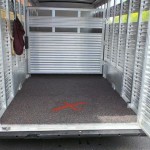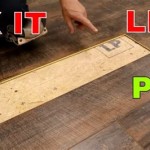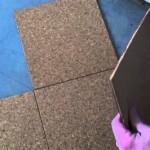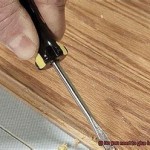How To Wash Wood Laminate Flooring
Wood laminate flooring offers an attractive and durable alternative to solid hardwood, providing the aesthetic appeal without the same level of maintenance demands. However, proper cleaning is essential to preserve its appearance and longevity. Understanding the specific needs of laminate flooring and employing the correct techniques can prevent damage and ensure a consistently clean surface.
Unlike hardwood, laminate flooring is constructed from layers of composite materials, with a photographic applique on the surface that mimics wood grain. A transparent wear layer protects this image, making the flooring resistant to scratches and stains, but also susceptible to damage from excessive moisture. Therefore, the key to effectively washing wood laminate flooring lies in using minimal water and appropriate cleaning solutions.
Preparation is Key
Before commencing the washing process, thorough preparation is necessary to remove loose debris and prevent scratching the flooring surface. The initial step involves removing any furniture or obstacles from the area to be cleaned. This allows for unrestricted movement and ensures that all areas of the floor receive adequate attention.
Sweeping or vacuuming the floor is the next critical step. A soft-bristled broom or a vacuum cleaner with a floor brush attachment is recommended. Avoid using vacuums with beater bars, as these can potentially scratch or damage the laminate surface. Pay close attention to corners, edges, and areas beneath furniture where dust and debris tend to accumulate.
For areas with particularly stubborn dirt or grime, a dry microfiber cloth can be used to spot clean before washing. This pre-cleaning step ensures that the washing solution is not diluted by pre-existing dirt, maximizing its cleaning effectiveness.
Choosing the Right Cleaning Solution
Selecting the appropriate cleaning solution is crucial for maintaining the integrity of wood laminate flooring. Avoid using abrasive cleaners, scouring pads, or harsh chemicals such as bleach or ammonia, as these can damage the protective wear layer and fade the photographic applique. Instead, opt for pH-neutral cleaners specifically formulated for laminate flooring.
Many commercially available laminate floor cleaners are effective and readily accessible. These cleaners typically have a balanced formula designed to remove dirt and grime without leaving behind a residue that can dull the floor's appearance. Always follow the manufacturer's instructions for dilution and application.
For a more economical and environmentally friendly alternative, a homemade cleaning solution can be prepared using white vinegar and water. A solution of one part white vinegar to ten parts water is generally recommended. The vinegar helps to cut through dirt and grime while also acting as a natural disinfectant. However, it is essential to use this solution sparingly, as excessive vinegar can potentially damage the laminate over time.
Another option for a homemade cleaning solution is using a mild dish soap, such as those designed for handwashing dishes. Add only a few drops of dish soap to a bucket of water, ensuring that the solution is not overly sudsy. Excess soap can leave behind a sticky residue that attracts dirt and dulls the floor's shine.
Regardless of the cleaning solution chosen, always test it in an inconspicuous area before applying it to the entire floor. This ensures that the solution does not cause any discoloration or damage to the laminate surface. Allow the test area to dry completely before proceeding with washing the entire floor.
The Washing Process
Once the floor is prepared and the cleaning solution is selected, the washing process can commence. The key to effectively washing wood laminate flooring lies in using a damp mop, not a wet mop. Excessive water can seep into the seams of the laminate planks, causing swelling, warping, and ultimately, permanent damage.
A microfiber mop is highly recommended for washing laminate flooring. Microfiber mops are absorbent and efficient at removing dirt and grime. They also require less water than traditional cotton mops, minimizing the risk of water damage.
Before using the mop, thoroughly wring it out until it is only slightly damp. The mop should not be dripping wet. It should feel almost dry to the touch. Dip the mop into the cleaning solution and wring it out again to remove excess liquid.
Wash the floor in sections, overlapping each stroke slightly to ensure that all areas are covered. Apply gentle pressure to remove dirt and grime without scrubbing too vigorously. If the mop becomes excessively dirty, rinse it thoroughly in clean water and wring it out again before continuing.
For areas with stubborn stains or dried-on spills, allow the cleaning solution to dwell on the affected area for a few minutes before wiping it away. Use a soft cloth or sponge to gently scrub the stain if necessary. Avoid using abrasive materials that can scratch the laminate surface.
After washing each section of the floor, inspect it carefully for any remaining dirt or streaks. If necessary, go over the area again with a clean, damp mop. It’s crucial to ensure a streak-free finish for optimal appearance.
Once the entire floor has been washed, allow it to air dry completely. This typically takes only a few minutes, as the floor should not be excessively wet. Opening windows or using a fan can help to speed up the drying process.
Avoid walking on the floor until it is completely dry. This prevents tracking dirt and leaving behind footprints that can detract from the clean appearance. If immediate traffic is necessary, place clean towels or mats in high-traffic areas to protect the floor.
Addressing Specific Stains and Spills
While wood laminate flooring is relatively stain-resistant, certain types of spills and stains require specific treatment. Promptly addressing spills is crucial to prevent them from penetrating the surface and causing permanent damage.
For liquid spills, immediately blot the area with a clean, absorbent cloth. Avoid rubbing the spill, as this can spread it and make it more difficult to remove. Continue blotting until the area is dry.
For greasy spills, such as oil or butter, use a dry cloth to absorb as much of the spill as possible. Then, apply a small amount of baking soda to the affected area. The baking soda will help to absorb the remaining grease. Allow the baking soda to sit for a few minutes before vacuuming it up. Wipe the area with a damp cloth to remove any residue.
For sticky spills, such as juice or syrup, use a damp cloth to wipe away the spill. If the spill is particularly stubborn, you can use a mild dish soap solution to loosen the residue before wiping it away.
For stains caused by ink, crayon, or markers, try using a small amount of rubbing alcohol on a clean cloth. Gently rub the stain until it disappears. Be sure to test the rubbing alcohol in an inconspicuous area first to ensure that it does not damage the laminate surface.
For stains caused by pet accidents, clean the area immediately with a pet-specific stain and odor remover. These products are designed to neutralize the odors and prevent pets from re-offending in the same area.
Preventative Measures and Long-Term Care
In addition to regular washing, several preventative measures can help to maintain the appearance and longevity of wood laminate flooring. These measures include using floor protectors under furniture legs to prevent scratches, placing mats at entrances to trap dirt and debris, and regularly trimming pet nails to minimize scratches.
Avoid wearing shoes with high heels or cleats on laminate flooring, as these can cause dents and scratches. Encourage household members and guests to remove their shoes upon entering the house.
When moving heavy furniture, use furniture sliders to protect the floor from scratches and dents. Lift furniture rather than dragging it across the floor.
Regularly inspect the flooring for any signs of damage, such as swelling, warping, or peeling. Address any issues promptly to prevent them from worsening. Replacing damaged planks as soon as possible can prevent moisture from seeping into the substrate and causing more extensive damage.
Consider using a floor sealant specifically designed for laminate flooring. These sealants can help to protect the surface from scratches, stains, and water damage. Follow the manufacturer's instructions for application and reapplication.
By adhering to these washing guidelines and preventative measures, wood laminate flooring can maintain its beauty and durability for years to come. Consistent care and attention to detail will ensure a clean, attractive, and long-lasting flooring surface.

How To Clean Laminate Floors The Home Depot

Deep Cleaning Your Laminate Floors A Step By Guide

How To Clean Laminate Floors The Home Depot
How To Clean Laminate Wood Floors Without Damaging Them Quora

How To Clean Laminate Floors Tips Advice Wipeout

Clean Your Hardwood Or Laminate Floors Naturally Onesmileymonkey Com

Ways To Clean Laminate Floors Bond Cleaning In Sunshine Coast

Easy Create Your Own Diy Natural Floor Cleaner Using Essential Oils

10 Best Laminate Floor Cleaners For A Restorative Shine 2024

How To Clean Laminate Floors In 8 Easy Steps
Related Posts








